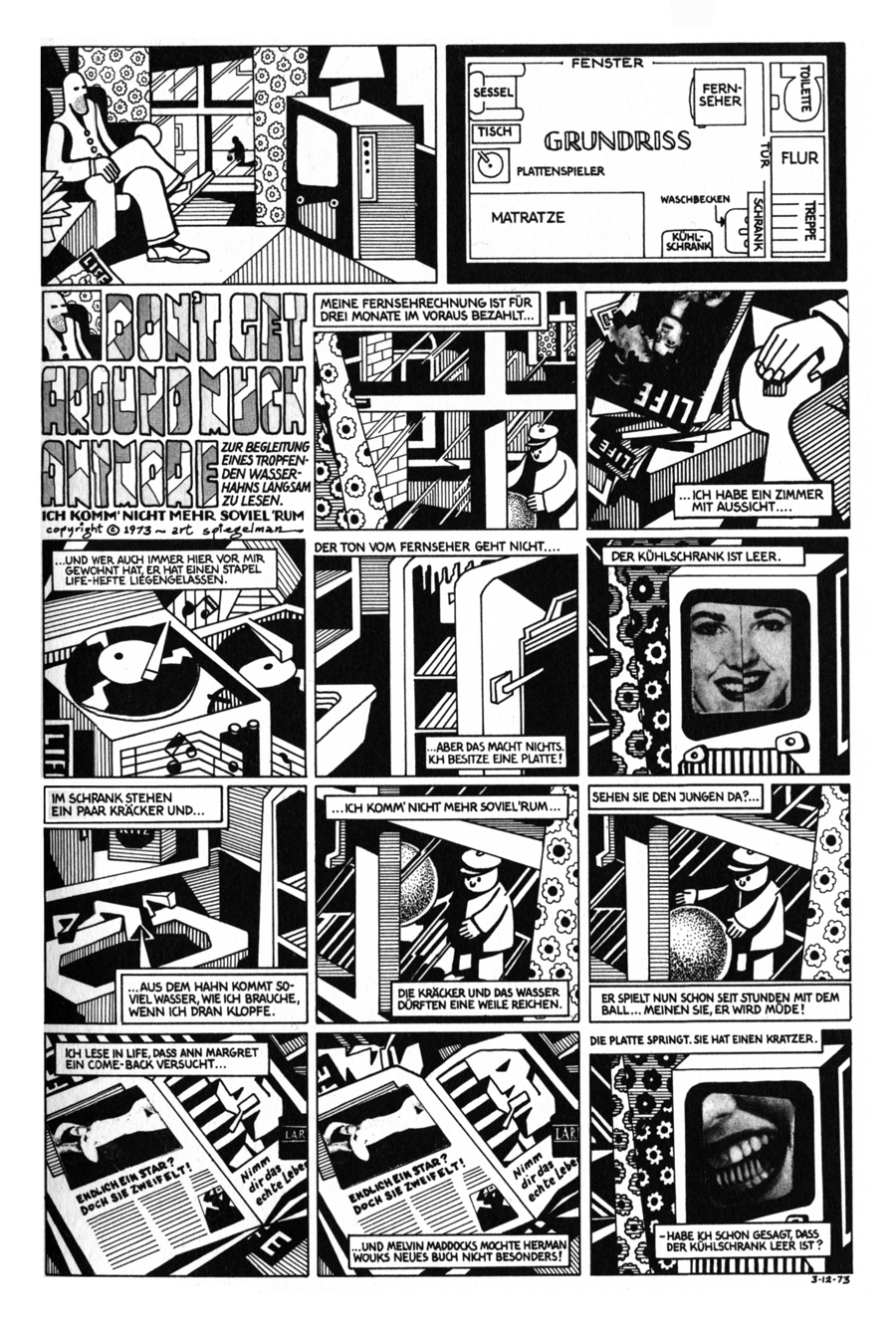

Maus altered the way most people view comics, but more than that, Art’s passion for the medium and expertise as a graphic storyteller has helped raise the consciousness of the art while engaging a larger audience.” Art is the form-giver of a significant shift in comics and visual literature. Steve Heller, a former art director for The New York Times and a frequent commentator on graphic art, calls Spiegelman “the godfather of sophisticated literary, autobiographical comics. I learned politics from Pogo and everything else from Mad magazine.” I learned about sex from Archie’s friends, Betty and Veronica. And at age 61, he has ample accolades, books, museum shows and a Pulitzer Prize for Maus to prove his talent. “Narrative informs my work,” Spiegelman says.

It has not been easy, and Spiegelman is frank when explaining how he reached that goal. Over a lifetime, Spiegelman has almost single-handedly brought comic books out of the toy closet and onto the literature shelves. Means of expression in the imagination of one of comics’ leading lights.Īmong serious artists, illustrators, comic-book mavens and critics, there is near-universal agreement: Art Spiegelman, through his two brilliantly original Maus books and other works, challenged traditional thinking about comics in the United States and led to a revolution in the way Americans-adult and young-view the genre. (Aug.Talk balloons and cartoon panels become adult, intelligent and graphically creative This is a masterful addition to the growing library of serious comics works. Donning the personas of both the detective he created and his own creator, Auster himself, Quinn attempts to protect a young man, who as a child was kept without light or language for nine years as his lunatic academic father tried to discover ``God's Language.'' In Quinn, the roles of fictional detective and creator/novelist are interchangeable and the processes by which these two carry out their investigative work-the fanatical collection of random detail, obsessive observation and recording, and an almost monastic introspection-serve as sublime indications of the serendipitous mix of chance, language and invention at root of the art of fiction.

This combination story, lecture and literary deconstruction begins when New York City detective novelist Daniel Quinn answers a wrong number. And while Karasik's faithful adaptation of Auster's crisp prose partially obscures its author's sly allusions to the act of writing itself, Mazzuchelli's black-and-white illustrations capture and expand on Auster's precise documentation of place, psychological development and pedagogical improvisation with unusual style, simplicity and graphic facility. Auster's acclaimed novel City of Glass, a dreamlike meditation on language and fiction in the form of a detective novel, has been translated into comics form to stunning effect.


 0 kommentar(er)
0 kommentar(er)
